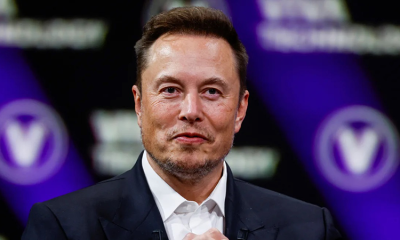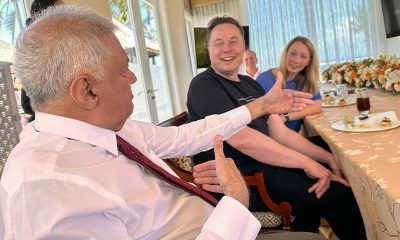Latest News
Elon Musk’s Tesla recalls two million cars in US over Autopilot defect
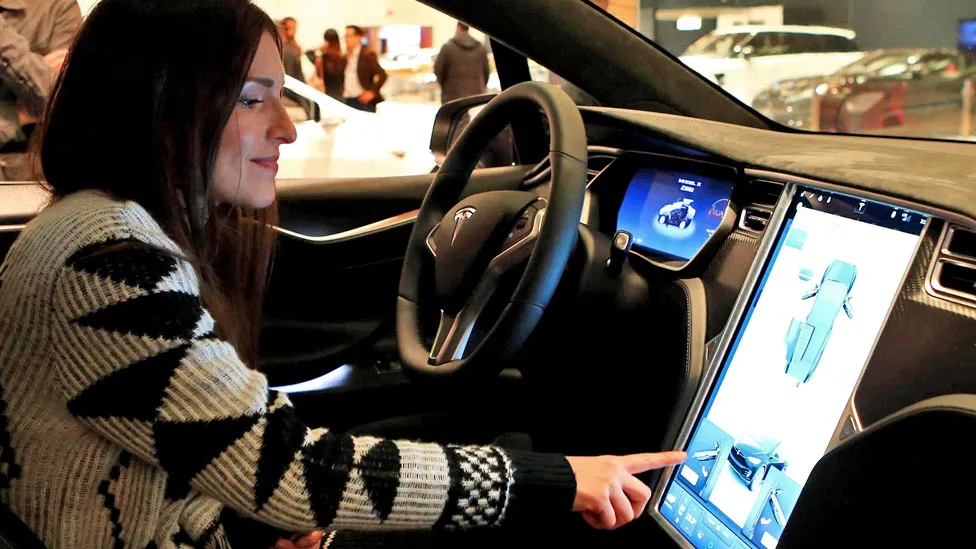
Tesla is recalling more than two million cars after the US regulator found its driver assistance system, Autopilot, was partly defective.
It follows a two year investigation into crashes which occurred when the tech was in use.
The recall applies to almost every Tesla sold in the US since the Autopilot feature was launched in 2015.
Tesla, owned by billionaire Elon Musk, said it would send a software update “over the air” to fix the issue. The update happens automatically and does not require a visit to a dealership or garage, but is still referred to by the US regulator as a recall.
The UK Driver and Vehicle Standards Agency said it was not aware of any safety issues involving Teslas in the UK, noting that cars sold in the UK are not equipped with all of the same features as cars in the US. “Teslas sold in the UK market are not self-driving and are not approved to do so,” a spokesperson said, adding that the agency would continue to monitor the situation.
Autopilot is meant to help with steering, acceleration and braking – but, despite the name, the car still requires driver input.
Tesla’s software is supposed to make sure that drivers are paying attention and that the feature is only in use in appropriate conditions, such as driving on highways.
But the US National Highway Traffic Safety Administration (NHTSA) said a two-year investigation of 956 Tesla crashes found that “the prominence and scope of the feature’s controls may not be sufficient to prevent driver misuse. Automated technology holds great promise for improving safety but only when it is deployed responsibly”, the NHTSA wrote, adding it would continue to monitor the software once it was updated.
Tesla did not respond to a request for comment.
According to the recall notice, the company did not concur with the agency’s analysis but agreed to add new features to resolve the concerns, including additional checks on turning on the self-driving features.
The recall comes a week aftera former Tesla employee told BBC he believed the technology was not safe. Lukasz Krupski, speaking after winning the Blueprint Prize which recognises whistleblowers, told the BBC: “I don’t think the hardware is ready and the software is ready. It affects all of us because we are essentially experiments in public roads”, he claimed.
Reacting to the news of the recall Mr Krupski told the BBC it was “a step in the right direction” but pointed out it was not just a problem in the US. “The hardware is the same in all the Teslas in the US, China etc.”, he said
Safety metrics
On Tuesday, Tesla defended the safety of Autopilot in a post on X (formerly Twitter) in response to a Washington Post article.
“Safety metrics are emphatically stronger when Autopilot is engaged than when not engaged” it wrote, pointing to statistics that suggested there were fewer crashes when the system was used.
Jack Stilgoe, associate professor at University College London, who researches autonomous vehicles, said Tesla should have spent more time developing the system in the first place. “The conventional way of ensuring safety is to check that a car is safe when it leaves the factory”, he told the BBC.
But despite this being the second recall this year affecting Tesla vehicles, Susannah Streeter of investment company Hargreaves Lansdown, said her assessment was that it should not check the carmaker’s momentum too greatly:
“This recall of 2 million cars on its own is not likely to seriously quash enthusiasm. The share price has dropped back slightly, but it doesn’t look like it’ll be hit by a bad bout of skidding. “After all, recalls in the car industry are far from unusual and the group also has the financial ability to invest in fixes”, she added.
Tesla has heavily promoted the technology in its cars and says remaining at the cutting edge of self-driving is key to its future growth.
Goldman Sachs analysts estimated this month that Tesla’s most advanced Autopilot offering, full self driving, could end up generating more than $50bn a year in revenue by 2030, up from $1bn-$3bn presently.
In the US, the full-self driving package costs $12,000, or a $199 monthly subscription fee.
“Autonomy is really where it’s at,” Mr Musk told investors this summer.
Additional alerts
Critics have said Tesla has misled customers about its software’s capabilities, contributing to risks.
The carmaker is facing other government investigations, as well as a number of lawsuits in the US in relation to crashes involving the software.
But a jury in one of the first cases to go to trial found that Tesla’s autopilot technology was not to blame.
The new controls that Tesla has agreed to do should help limit drivers from using Autopilot unsafely, said Professor Missy Cummings, director of the Autonomy and Robotics Center at George Mason University. But she added that there was “an opportunity missed” for regulators to require Tesla to make Autopilot features unavailable in places where it is not supposed to be used.
The recall centres on a part of Autopilot called Autosteer.
Autosteer helps keep a car in the correct lane in conjunction with “traffic-aware cruise control” which matches the speed of the car to that of the surrounding traffic. The driver is expected to have their hands on wheel and be ready to take over from the assistive system when required.
When Autosteer is on, systems in the car monitor that the driver is paying attention. If it detects the driver isn’t there are warning alerts. There are also alerts if the driver tries to use Autosteer in inappropriate circumstances.
According to the NHTSA recall report, the “over the air update” will include additional alerts and monitoring “to encourage the driver to adhere to their continuous driving responsibility whenever Autosteer is engaged.”
(BBC)
Latest News
‘Bloody policies’: MSF recovers 11 bodies from Mediterranean off Libya
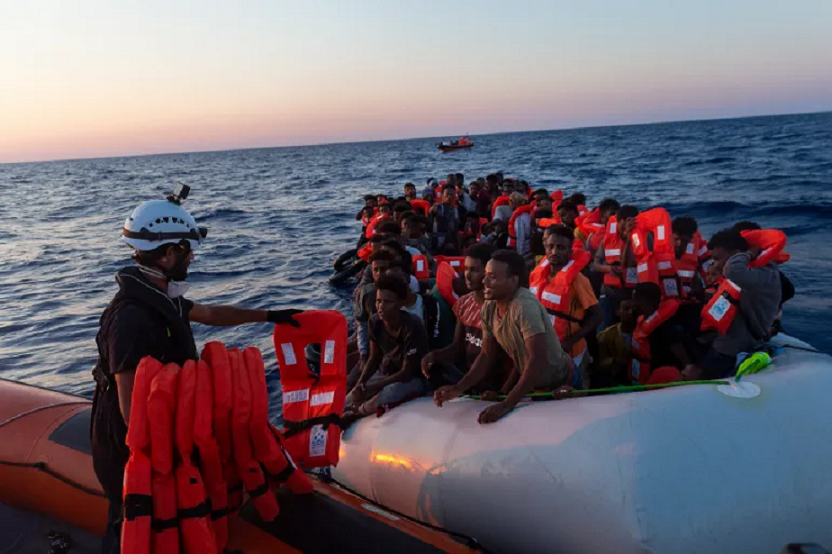
The aid group Doctors Without Borders has reported recovering 11 bodies and rescuing dozens of people off the coast of Libya as it criticised the migration policies of the North African country and European countries.
In a statement on Friday, the group, known by its French initials MSF, said its Geo Barents rescue vessel managed to recover the bodies following a search operation lasting more than nine hours after being alerted by German nongovernmental organisation Sea-Watch, which also rescues refugees and migrants.
“As we cannot determine the reason behind this tragedy, we know that people will continue to take dangerous routes in a desperate attempt to reach safety, and Europe must find safe and legal pathways for them,” MSF said in a post on X. “This catastrophe must end!”
Sea-Watch said it is unclear whether the bodies were victims of a previously unknown shipwreck, adding that they tried to contact Libya’s coastguard to go and retrieve the dead, but received no reply.
“The so-called Libyan coastguard – financed by the EU – ignored our call demanding that the bodies be recovered,” the group said.
Thousands of people trying to head from Africa to Europe use Libya as a departing point, with the Italian island of Lampedusa the nearest European destination as they undertake the dangerous journey across the Mediterranean to escape war, poverty and persecution.
Italy, which wants to put a stop to the migration stream, has said Libya and neighbouring Tunisia must do more to stop people from going to sea. It has also clamped down on the operation of the rescue ships, arguing that they encourage people to head to Europe, a charge that is denied by the charities.
Emphasising its policy on the rescue ships, Italy said on Friday that it forced the MSF rescue vessel to take the 165 people that it had saved from boats in the Mediterranean operation to the northern port of Genoa. The port was more than 650 nautical miles (1,200km) from their position and much farther than the more convenient ports in nearby Sicily, significantly delaying assistance to the rescued.
The route in the central Mediterranean is the most dangerous migrant crossing in the world, with the United Nations registering more than 20,000 deaths and disappearances in the area since 2014.
More than 3,000 refugees and migrants went missing in 2023 while attempting to use the route, according to the International Organization for Migration.
According to Italy’s interior ministry, the number of arrivals in the country has dropped in 2024 to fewer than 21,800 people since the beginning of the year, compared with close to 53,300 in the same period last year.
[Aljazeera]
Latest News
Mustafizur, Rishad, Hridoy dazzle in Bangladesh’s tight two-wicket win over Sri Lanka
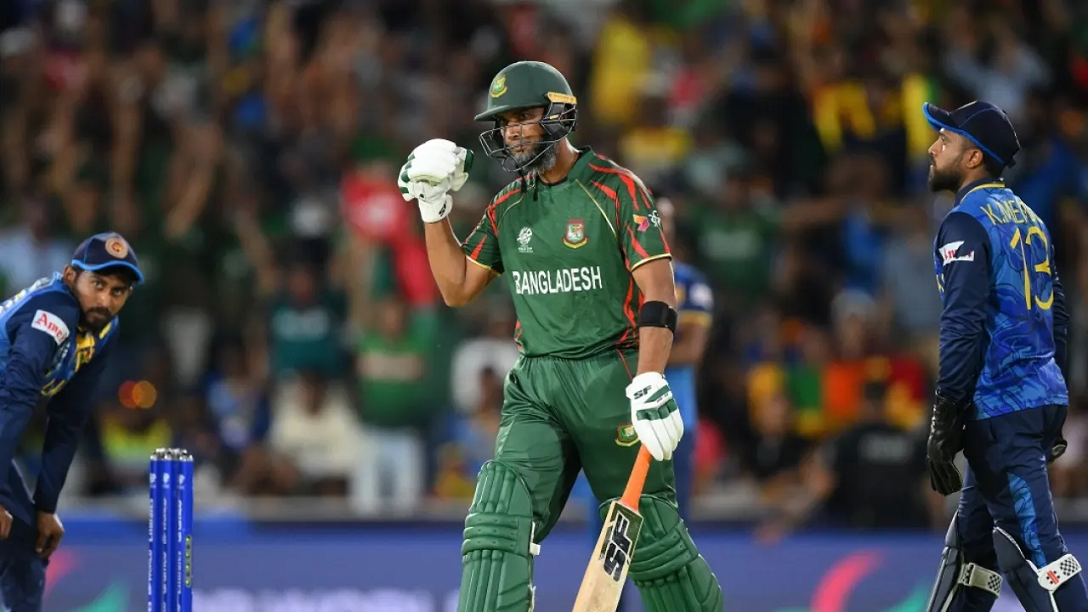
Nuwan Thushara’s last over brought Sri Lanka screaming back into the match,as he first bowled Rishad Hossain, and then nailed Taskin Ahmed in front of the stumps with a pinpoint swinging yorker. This left Bangladesh eight wickets down, with 12 runs still to get.
However, the experienced Mahmudullah was at the crease for Bangladesh, and despite some further nervy moments, pushed Bangladesh across the line off the last ball of the 19th over.
But this was a match chiefly decided by Bangladesh’s own outstanding bowling. Mustafizur Rahman was the best among them, using shorter lengths and his cutters efficiently, to claim figures of 3 for 17. Rishad Hossain’s three-for through the middle overs also kept Sri Lanka quiet.
Mustafizur was instrumental in Sri Lanka’s downward spiral through the middle overs, which culminated in a crash-and-burn end. Ultimately, their inability to find boundaries, or even rotate strike against good Bangladesh bowling resulted in their downfall. A score of 125 for 9 always seemed poor on a decent pitch, even if their bowlers made a match of it in the end.
Brief scores:
Bangladesh 125 for 8 in 19 overs (Towhid Hridoy 40, Litton Das 36; Dhanajaya de Silva 1-11, Nuwan Thushara 4-18, Wanidu Hasaranga 2-32, Matheesha Pathirana 1-27) beat Sri Lanka124 for 9 in 20 overs (Pathum Nissanka 47, Dhananjaya de Silva 21; Tanzim Hasan Sakib 1-24, Taskin Ahmed 2-25, Mustafizur Rahman 3-17, Rishad Hossain 3-22) by two wickets
[Cricinfo]
Latest News
Rashid, Farooqi and Gurbaz the stars as Afghanistan crush New Zealand
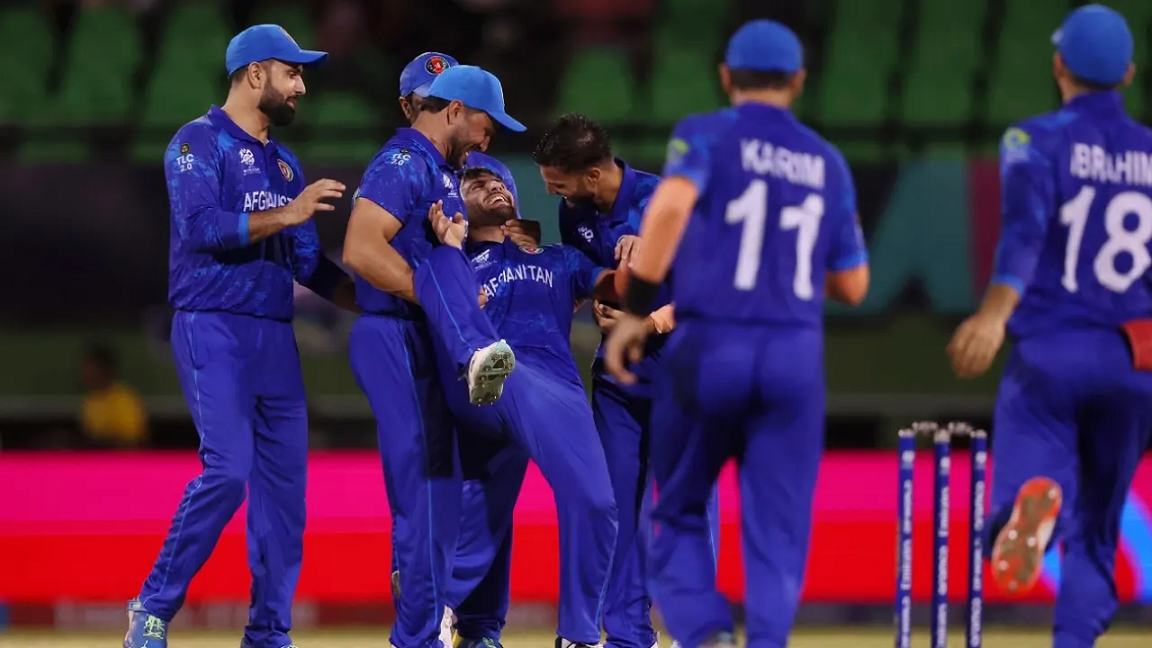
Afghanistan boosted their Super Eight chances with yet another dominating win, this time thumping New Zealand by 84 runs in Providence. Having beaten Uganda by 125 runs in their opening match, they are now at the top of Group C with a net run rate of 5.225.
After being sent in, Rahmanullah Gurbaz and Ibrahim Zadran gave Afghanistan a start of 103 in 14.3 overs. It came off the back of the 154 the pair added against Uganda, thus making them the first opening pair to register two successive century stands in the history of the T20 World Cup.
Afghanistan’s was an innings of two halves. They scored 55 for no loss in the first ten overs and 104 for 6 in the last ten, with Gurbaz contributing 80 off 56 balls. New Zealand, who had decided not to play any warm-up games, looked every bit rusty as their fielders dropped catches and missed run-out opportunities.
With the pitch assisting both seamers and spinners, chasing 160 was not going to be easy. But few would have expected New Zealand to collapse in the manner they did.
Fazalhaq Farooqi picked up three wickets in the powerplay and Rashid Khan three just after it. Eventually, both ended with identical figures of 4 for 17 as New Zealand were bowled out for 75 in the 15.2 overs. Glenn Phillips and Matt Henry were the only New Zealand batters to reach the double digits.
Trent Boult found some swing in the opening over but Gurbaz and Ibrahim showed their intent by picking up three fours off Henry from the other end. Both batters had luck on their side, too. Gurbaz got a second life when he skipped down the track to Santner and missed the ball, which went on to brush the leg stump but the bails did not budge. In the following over, Finn Allen dropped Ibrahim off Henry at the deep-square-leg boundary.
That was not all. Gurbaz got another reprieve after being involved in a miscommunication with Ibrahim. Having taken off for a single, Gurbaz had to retrace his steps and would have been run out had Conway not fumbled the throw.
Two balls later, New Zealand finally seemed to have found success when Santner pinged Ibrahim’s pads and umpire Kumar Dharmasena ruled it lbw. But the batter got the decision overturned on review as the ball was heading down the leg side. Immediately after that, Ibrahim hit Santner for an inside-out four as Afghanistan ended the powerplay on 44 for no loss.
New Zealand went against the prevailing wisdom of not bowling an offspinner when two right-hand batters at the crease, and Michael Bracewell repaid that faith by conceding only six off his first two overs.
Lockie Ferguson was even more frugal, going for five in his first two. He could have had Ibrahim off a slower full toss but a leaping Kane Williamson failed to pull off a one-handed stunner at mid-off. That meant while Afghanistan remained unscathed, they had only 55 on the board after ten overs.
Afghanistan had not hit a single six in the first ten overs, but there were five in the next three, including three in one Bracewell over as Gurbaz and Bracewell stepped on the accelerator. The pair took the side past 100 in the 14th over. New Zealand finally broke through when Ibrahim bottom-edged a short ball from Henry onto his stumps, after having been hit on the grille on the previous delivery.
Promoted to No. 3, Azmatullah Omarzai played his part with 22 off 13, which included two sixes in three balls off Henry. Mohammad Nabi fell for a first-ball duck but Gurbaz kept finding the boundary at regular intervals. However, a three-wicket, three-run final over by Boult kept Afghanistan to 159.
Farooqi gave Afghanistan a dream start with the ball. With the very first delivery of the innings, he uprooted Finn Allen’s leg stump as the ball moved in late. In the seamer’s next over, Conway pushed at one that seemed to come slower off the surface and was caught at extra cover.
The decision to give Farooqi a third over in the powerplay brought further rewards. This time, bowling around the wicket to Daryl Mitchell, he got a length delivery to just straighten and take the outside edge. Gurbaz took a regulation catch to complete the dismissal and leave New Zealand 28 for 3.
It could have been worse for New Zealand. In between, Naveen-ul-Haq had rapped Kane Williamson’s front pad after the batter had moved across to play a delivery. Afghanistan sent it upstairs for an lbw review but the umpire’s call saved the New Zealand captain.
Afghanistan did not have to wait too long for Williamson’s wicket. Rashid brought himself on after the powerplay and struck straightaway as Williamson guided one to first slip. But Rashid was just warming up. In his next over, he dismissed Mark Chapman and Bracewell off successive deliveries to leave New Zealand on 43 for 6. Chapman went for a pull and got bowled; Bracewell was late to bring his bat down and was lbw.
Phillips was New Zealand’s last hope. He did hit a couple of boundaries but was soon caught at long-on when he tried to take on Nabi. That ended any hopes of revival New Zealand might have had.
Brief scores:
Afghanistan 159 for 6 in 20 overs (Rahmanullah Gurbaz 80, Ibrahim Zadran 44, Azmatullah Omarzai 22; Trent Boult 2-22, Matt Henry 2-37, Lockie Fergusoan 1-28) beat New Zealand 75 in 15.2 overs (Glenn Phillips 18; Rashid Khan 4 for 17, Fazalhaq Farooqi 4 for 17, Mohammad Nabi 2-16) by 84 runs
[Cricinfo]


